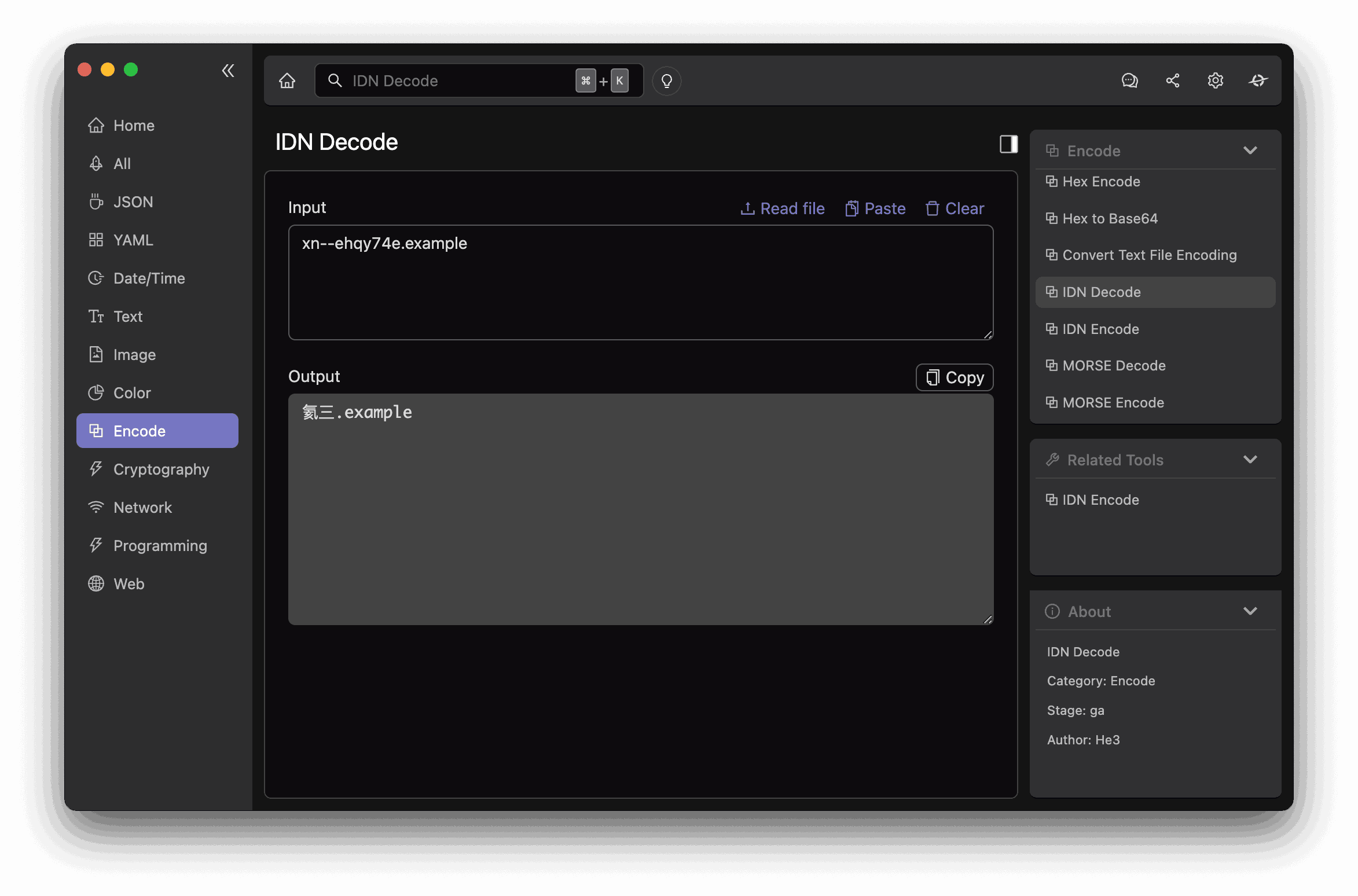Introduction
Punycode is a clever encoding technique designed to convert Unicode characters into a limited subset of ASCII characters. This allows non-English domain names and email addresses to be represented in a way that can be processed by older systems. In this article, we will dive into the fascinating world of Punycode, understand how it works, and explore its use cases and key features for developers.
Punycode Explained
The Punycode Algorithm
Punycode works by converting Unicode strings into a limited set of ASCII characters, using a specific algorithm. It represents a combination of ASCII characters and digits, starting with a prefix “xn—“. By doing so, it maintains compatibility with existing applications and protocols that are designed to handle ASCII characters only.
The encoding process consists of two main steps:
Separating the input string into basic code points (ASCII characters) and non-basic code points (non-ASCII characters). Applying a series of mathematical operations to the non-basic code points to represent them using a subset of ASCII characters and digits.
Sample Code
Here’s a simple example of encoding and decoding a Unicode string using Python’s idna library:
import idna
# Encoding a Unicode string to Punycode
domain = "例子.测试"
encoded_domain = idna.encode(domain).decode("ascii")
print(encoded_domain) # Output: xn--fsq510h.xn--0zwm56d
# Decoding a Punycode string back to Unicode
decoded_domain = idna.decode(encoded_domain).encode("utf-8").decode("utf-8")
print(decoded_domain) # Output: 例子.测试Key Features
| Feature | Description |
|---|---|
| Compatibility | Ensures compatibility with applications and protocols that support only ASCII characters. |
| Language support | Allows representation of domain names and email addresses in a wide range of languages. |
| Compactness | Encodes non-ASCII characters efficiently, using a relatively small number of ASCII characters. |
Scenarios for Developers
- Internationalized Domain Names (IDNs): Punycode enables developers to create and manage domain names in non-Latin scripts, providing better support for users worldwide.
- Internationalized Email Addresses: Punycode allows developers to support non-ASCII email addresses, expanding the range of users who can access their applications and services.
- User Interface Localization: Developers can use Punycode to display domain names and email addresses in their native scripts, enhancing the user experience for a global audience.
Or you can use encode/decode punycode in He3 Toolbox (https://t.he3app.com?3tfm ) easily.


Misconceptions and FAQs
Misconceptions
Punycode is a character set: Punycode is not a character set, but an encoding algorithm that translates Unicode characters into ASCII characters.
Punycode is only for domain names: Although Punycode is widely used for domain names, it can also be applied to other scenarios, such as email addresses.
FAQs
Is Punycode still relevant? Yes, Punycode remains relevant as it ensures compatibility with older systems and protocols that support only ASCII characters.
Can Punycode be used for all Unicode characters? Punycode can encode any Unicode string, allowing representation of a wide range of languages and characters.
Conclusion
Punycode is an essential tool for developers working with internationalized domain names and email addresses. It provides compatibility with older systems, supports a wide range of languages, and offers efficient encoding of non-ASCII characters. By understanding how Punycode works, developers can better support a global user
